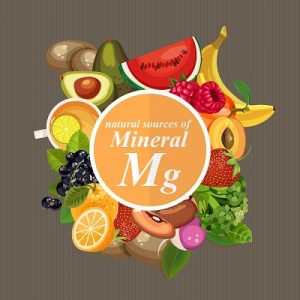 When you eat a balanced, healthy diet, your body is more apt to receive the vitamins and minerals it needs.
When you eat a balanced, healthy diet, your body is more apt to receive the vitamins and minerals it needs.
If your diet is more like the Standard American Diet (SAD), you could be missing vital nutrients such as magnesium which your body needs to be healthy. Learning how to combat magnesium deficiency with food can greatly affect how you feel and how well you are.
Many people don’t think about the specific nutrients in their food. They know what they like to eat and will choose those foods regardless of whether they lose out on the vital building blocks needed for health.
Magnesium is needed to be able to metabolize glucose, aids in formation of the enzymes which free energy from the foods you eat, produces cellular energy and aids in the production of proteins.
Adults require between 300 to 350 milligrams per day. Children, on the other hand, require 200 milligrams per day. Pregnant and lactating women may require different amounts; they should check with their doctor to ensure they get the right amount.
Without this vital trace mineral you may experience any of the following symptoms:
- Fatigue
- Insomnia
- Muscle twitching
- Irritability
- Rapid heartbeat
- Muscle cramps
- Numbness
- Hallucinations
- Depletion of calcium which can lead to osteoporosis
- Imbalanced blood sugar levels which can lead to diabetes
- Increased blood pressure
- Too many fats in your bloodstream
- Depression
- Lack of appetite
- Nausea and vomiting
- Kidney stones
- Coronary heart disease
- Formation of blood clots
- Fibromyalgia
- Migraines
- Mitral valve prolapse
- Premature birth
As you can tell, having a magnesium deficiency can lead to some serious health problems. However, it is quite easy to avoid these problems. In fact you can do much to avoid magnesium deficiency simply by adding magnesium-rich foods to your diet.
Magnesium is found in all fruits and vegetables in varying amounts. The foods which contain the most magnesium are dark leafy greens such as Swiss chard, spinach or kale, seaweed, nuts, seeds and dried fruits. You can also find magnesium in figs, brown rice, pineapple, almonds, avocados and bananas. Apples, peaches, navy beans, lima beans, wheat germ and potatoes also contain larger amounts of this vital mineral.
As with many minerals found in foods, it is best to get them in foods which are unprocessed or cooked. Cooking and processing food can break down the vitamins and minerals in the foods until they no longer benefit the body.
For instance, if you cook navy beans they will lose about 65% of the magnesium they once held. Blanching spinach will lead to a 33% loss of magnesium.
Therefore try to eat foods as close to their natural state as feasible. This will ensure you get the most magnesium, and other vitamins and minerals, as possible from the foods you eat.
Be careful to keep your calcium levels up along with magnesium, as the two minerals work in conjunction with one another. Magnesium and calcium together help maintain the body’s metabolism. Calcium causes muscles to contract and magnesium causes them to relax again, which may explain why cramping is so common with magnesium deficiency.
Learning how to combat magnesium deficiency with food isn’t difficult. You can find a book which lists the vitamins and minerals found in food and use it until you learn which foods are highest in this mineral. Once you have that information tucked away, you won’t have to refer to the book any longer.






